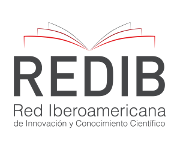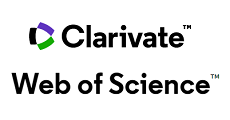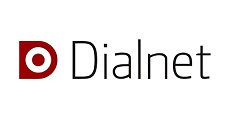Quality function deployment QFD: benefits and limitations when applied to designing myoelectric prosthesis hand
Despliegue de la función calidad (QFD): beneficios y limitaciones detectados en su aplicación al diseño de prótesis mioeléctrica de mano
DOI:
https://doi.org/10.15446/ing.investig.v25n1.14618Keywords:
quality function deployment (QFD), quality, quality characteristics, product design, customer opinion, user requirements (en)despliegue de la función calidad, QFD, casa de la calidad, calidad, diseño del producto, voz del cliente, requerimientos del usuario, características de calidad (es)
Downloads
Quality, cost and time spent in developing products have a direct impact on a company’s productivity, market share and profitability. Greater attention must be paid to quality and quicker responses made as customers become more aware of satisfying their longings. This means that a company must be first in delivering a product or service which customers desire if it wishes to gain and maintain market share. A company’s market share and profit margin will depend on the balance and optimization achieved between quality, cost and time. It is thus important to implant a method like Quality Function Deployment (QFD) leading to planning product development during early design stages and consequently establish such equilibrium. This article’s purpose is to present benefits and limitations regarding QFD; one should be aware of them and QFD development when identifying the most viable to be applied according to each company’s inherent characteristics.
La calidad, el costo y el tiempo de desarrollo de productos tienen un impacto directo en la productividad, en la participación del mercado y en la rentabilidad de la empresa. A medida que los usuarios alcanzan mayor conciencia sobre sus deseos, es necesario mayor nivel de calidad y una respuesta en el tiempo más rápida. Es decir, si se quiere ganar y mantener participación en el mercado, se debe llegar primero que la competencia con el producto o servicio que desea el cliente.
Del balance y optimización que se logre entre calidad, costo y tiempo dependerá la participación en el mercado y el margen de rentabilidad alcanzado por la empresa. Por lo tanto, es importante implantar metodologías como el Despliegue de la función calidad, que permiten planificar el desarrollo de producto en la etapa temprana de diseño y por ende se logra establecer dicho equilibrio.
El propósito de este artículo es presentar el desarrollo de la metodología QFD sus beneficios y limitaciones. Puesto que no sólo es importante conocer su desarrollo sino también ser consciente de los beneficios y limitaciones en el momento de aplicarla, con el fin de identificar la más viable de aplicar según las características de cada empresa.
References
Agoyuridas, Vassilis; Baxter, Jim.; Mckay, Alison, “On Defining Product Requirements: A Case Study in the UK Health Care Sector”, Design Engineering Technical Conferences and Computers and Information in Engineering Conference, 2001. DOI: https://doi.org/10.1115/DETC2001/DTM-21692
Akao, Y., “Despliegue de la función calidad: integración de las necesidades del usuario en el diseño del Producto”, Japón, 1990.
Chan, Lai-Kow; WU, Ming-Lu, “Quality Function Deployment: A Literature Review”, European Journal of Operational Research, January, 2002 DOI: https://doi.org/10.1016/S0377-2217(02)00178-9
Cristiano, John J.; Liker, Jeffrey and White, Chelsea, “Product Development Through QFD”, The Journal of Product Innovation Management, Vol. 17, No. 4, July, 2000. DOI: https://doi.org/10.1111/1540-5885.1740286
Dong, Chensong, Zhang Chuck, Wang, Ben, “Integration of Green Quality Function Deployment Fuzzy Multi- Attribute Utility Theory Based Cost Estimation for Environmentally Conscious Product Deployment”, Florida.
Fixon, Sebastian K., “Three Perspectives on Modularity a Literature Review of a Product Concept for Assembled Hardware Products”, Massachusetts Institute of Technology, October, 2001.
Gonzáles B.; Verónica; Tamayo E., Francisco, “Blits: QFD: Un vistazo relámpago al poder de QFD”, Universidad de Granada, España, 2002.
Gonzales E., M.E., “QFD La Función Despliegue de la Calidad”, McGraw-Hill, España, 2000.
Halong, Anthony, “Selection of Sustainable Product Improvement Alternatives”, Universitat Fridericiana Zu Karlsruhe, 2002
Hernández, C., Carlos, Phabmixay, Chantaly, “La función tecnológica como nexo de la unión entre la orientación al mercado y el enfoque de recursos: aplicación de la matriz QFD”., Granada, España, 2002.
Kim, K.J.; Moskowits, H.; Dhingra, A.; Evans, G., “Fuzzy Multicriteria Models for Quality Function Deployment”, European Journal of Operational Research, September, 1998.
Ll, H., and Azarm, S., “Product Design Selection Under Uncertainty and whit Competitive Advantage”, Journal of Mechanical Design, Vol 22, Diciembre, 2000.
Mazur, Glenn; Rings, Cathy; Barton, Brian., “Consumer Encounters: Improving Idea Development and Concept Optimization”, The 10 TH Symposium on Quality Function Deployment, QFD Institute, Michigan, 1998.
Mazur, Glenn, “Closes Encounter of the QFD Kind”. Sixth Annual Service Quality Conference. QFD Institute, University of Michigan, Japan Business Consultants, University of Michigan College of Engineering Michigan, Michigan, 1997.
Mazur, Glenn, “Introduction to QFD workshop”, QFD Institute, Japan Business Consultants, 2000.
Mazur, Glenn; Bolt, Andrew, “Jurassic QFD: Integrating Service and Product Quality Function Deployment”, The 11 TH International Symposium on Quality Function Deployment, QFD Institute, Michigan, 1999,
Mazur, Glenn, “9 House of Quality Checks”, QFD Institute, Japan Business Consultants, 1993.
Mazur, Glenn; Gibson, J.; Harries, Bruce, “QFD Applications in Health Care and Quality of Work Life”, The 1 TH International Symposium on Quality Function Deployment, QFD Institute, Tokyo, 1995.
Mazur, Glenn, “QFD for Small Business: A Shortcut Through the Maze for matrices”, The 6 TH International Symposium on Quality Function Deployment, Michigan, 1994.
Mazur, Glenn, “Strategy Deployment for Small and Medium Enterprise”, QFD Institute, University of Michigan, Japan Business Consults, Sydney, 1998.
Mazur, Glenn, “Voice of Customer Analysis: A Modern System of Front-end QFD Tools, Whit Case of studies”, QFD Institute, Japan Business Consultants, 1997.
Monteiro de Carvaloho, Marly, “QFD, Uma Ferramenta de Toma de Decisao en Proyeto”. Brasil 1200, Universidad Federal de Santarina.
Olaya E.; Erika S., “Despliegue de función calidad (QFD) apoyado mediante lógica difusa para requerimientos de diseño de prótesis mioeléctrica de mano”, tesis presentada a la Universidad Nacional de Colombia para optar al grado de magister en ingeniería-materiales y proceso, 2004.
Prasad, Biren, “Review of QFD and Related Deployment Techniques”, Journal of Manufacturing Systems, Vol. 17 No13, 1998, pp. 221-234. DOI: https://doi.org/10.1016/S0278-6125(98)80063-0
Puente G., Javier; Priore M., Paolo; Pino D.; Raul, “La asignación de prioridades a las necesidades del usuario en el despliegue de la función calidad. Un enfoque borroso”, Universidad de Oviedo, España.
Rings, Cathi; Barton, Brian; Mazur, Glenn, “Consumer Encounters: Improving idea Development and Concept Optimization”, QFD Institute, 10th Symposium on QFD, 1998.
Stone, Robert B.; Wood, Kristin L., “Development of a Functional Basis for Design”, Journal of Mechanical Design, Vol. 122, December, 2000. DOI: https://doi.org/10.1115/1.1289637
Tang, Jiatu.; Fung, Richard Y.K.; Xu, Baodong; Wang, Dingwei, “A New Approach to Quality Function Deployment Planning with financial Consideration”, Computers & Operations Research, January, 2001. DOI: https://doi.org/10.1016/S0305-0548(01)00041-7
Temponi, Temponi; Yen, John; Tiao, Amos, “House of Quality: A Fuzzy Logic-Based Requirements Analysis”, European Journal of Operational Research, April, 1998. DOI: https://doi.org/10.1016/S0377-2217(98)00275-6
Vanegas, L.V.; Labid A.W, “A Fuzzy Quality Function Deployment (FQFD) Model for Deriving Optimum Targets”, International Journal of Production Research, Taylor& Francis. Ltd, vol. 39, No.1, pp. 99-120, 2001. DOI: https://doi.org/10.1080/00207540010005079
Vanegas, L.V.; Labid A.W., “An Improved Quality Function Deployment (QFD) Method”, CARS & FOF South Africa, pp. 152-161, 2001
Vanegas, L.V.; Labid A.W. “Using Fuzzy Sets in Engineering Design: a short Review”. CARS & FOF, Trinidad y Tobago, pp. 541-548. 2000.
Vanegas, L.V., Labid A.W., “Quality Function Deployment: a short Review”, CARS & FOF South Africa, pp. 255-262, 2001.
Yang, Y.Q.; Wang, S.Q.; Dulaimi, M., “A Fuzzy Quality Function Deployment System for Build Able Design Decision- Makings”, Automation in Construction, 2003. DOI: https://doi.org/10.1016/S0926-5805(03)00002-5
Verma, Dinesh; Chilakapati, Rajesh; Fabrycky, Wolter, “Analyzing a Quality Function Deployment (QFD) Matrix: An Expert System Based Approach to Identity Inconsistencies and Opportunities”.
Wollover, David R., “Quality Function Deployment as a Tool for Implementing cost as an Independent Variables”, 1997.
Yacuzzi, Enrique; Martin, Fernando, “QFD: conceptos, aplicaciones y nuevos desarrollos”, Universidad del CEMA y Aventis Pharma.
Yu, J.S.; González Zugasti; Otto, K.N., “Product Architecture Definition Based Upon Customer Demands”, Journal of Mechanical Design, Vol. 121, September, 1999. DOI: https://doi.org/10.1115/1.2829464
Fuente: Despliegue de función calidad (QFD) apoyado mediante lógica difusa para requerimientos de diseño de prótesis mioeléctrica de mano, Apéndice D.
How to Cite
APA
ACM
ACS
ABNT
Chicago
Harvard
IEEE
MLA
Turabian
Vancouver
Download Citation
CrossRef Cited-by
Dimensions
PlumX
Article abstract page views
Downloads
License
Copyright (c) 2005 Erika Sofía Olaya Escobar, Carlos Julio Cortés Rodríguez, Óscar Germán Duarte Velasco

This work is licensed under a Creative Commons Attribution 4.0 International License.
The authors or holders of the copyright for each article hereby confer exclusive, limited and free authorization on the Universidad Nacional de Colombia's journal Ingeniería e Investigación concerning the aforementioned article which, once it has been evaluated and approved, will be submitted for publication, in line with the following items:
1. The version which has been corrected according to the evaluators' suggestions will be remitted and it will be made clear whether the aforementioned article is an unedited document regarding which the rights to be authorized are held and total responsibility will be assumed by the authors for the content of the work being submitted to Ingeniería e Investigación, the Universidad Nacional de Colombia and third-parties;
2. The authorization conferred on the journal will come into force from the date on which it is included in the respective volume and issue of Ingeniería e Investigación in the Open Journal Systems and on the journal's main page (https://revistas.unal.edu.co/index.php/ingeinv), as well as in different databases and indices in which the publication is indexed;
3. The authors authorize the Universidad Nacional de Colombia's journal Ingeniería e Investigación to publish the document in whatever required format (printed, digital, electronic or whatsoever known or yet to be discovered form) and authorize Ingeniería e Investigación to include the work in any indices and/or search engines deemed necessary for promoting its diffusion;
4. The authors accept that such authorization is given free of charge and they, therefore, waive any right to receive remuneration from the publication, distribution, public communication and any use whatsoever referred to in the terms of this authorization.




























